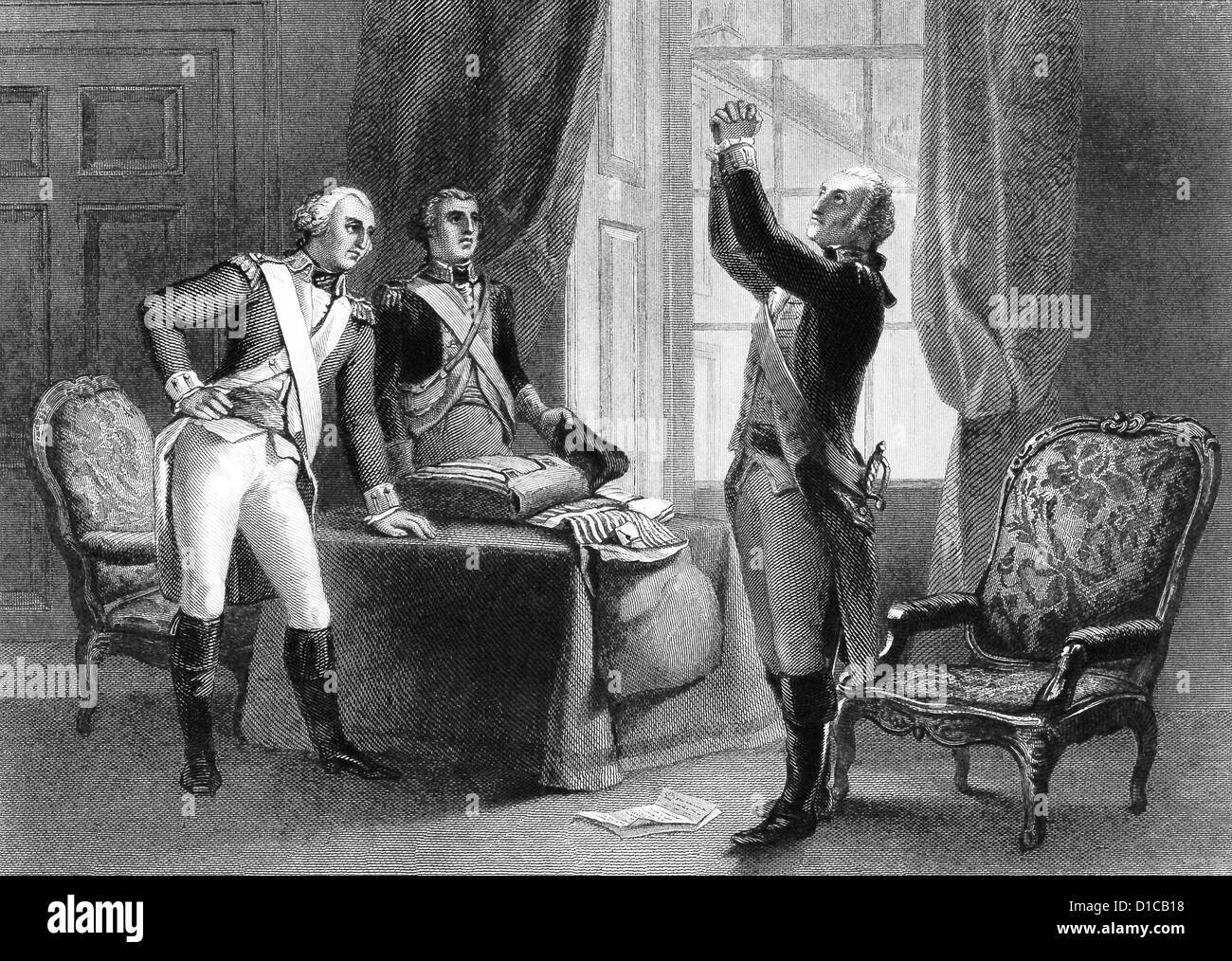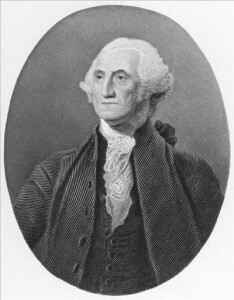George Washington is often seen as the father of the United States, not just because of his role in the American Revolution but also for his lasting influence on the nation's government. As the first President, Washington’s views on governance helped shape the country’s future. He believed in a balanced system where power was divided between the federal government and the states, and he stressed the importance of a strong but limited central government. Washington also feared political parties and believed they would tear the country apart. This is why his presidency and political thoughts are so closely examined and still studied today.
The Role of Imagery in Political Thought

Throughout history, imagery has played an essential role in communicating political ideas. Whether through paintings, sculptures, or modern media, visual representations often convey messages that words alone may not. In Washington's time, images were one of the most effective ways to communicate ideas to a broad audience, many of whom were illiterate. These images were not just artistic representations but deliberate tools designed to evoke a certain response or convey a particular message.
In the context of Washington, portraits and depictions often highlighted his leadership qualities, his connection to the people, and his vision for the nation. These images helped to shape the public’s perception of him as both a military leader and the nation’s guiding figure. Political leaders of the time knew that the right image could make or break their reputation.
Some key functions of political imagery include:
- Creating a memorable identity: Political figures often use images to create a strong, lasting impression.
- Conveying political ideals: An image can express complex ideas like unity, freedom, and leadership.
- Influencing public opinion: The right image can sway public perception and inspire loyalty or dissent.
Understanding George Washington’s Political Philosophy
George Washington’s political philosophy was grounded in his experiences as a military leader, his understanding of history, and his deep concerns about the future of the young nation. Washington had a firm belief in republicanism—the idea that government should be based on the consent of the people, and that citizens should elect leaders who represent their best interests. At the same time, Washington feared the dangers of factionalism and the rise of political parties, which he thought could divide the country.
One of Washington’s core beliefs was in a strong, centralized government. While he supported a federal structure, he was wary of allowing any one branch to become too powerful. He envisioned a government where power was separated and checked by different institutions to prevent tyranny. This is reflected in the structure of the U.S. Constitution, which he helped to support and ratify.
Washington also believed in national unity and the importance of a strong national defense. His famous Farewell Address warned against foreign entanglements and advised against forming permanent alliances with other countries. He also warned that the country should remain neutral in European conflicts, believing that the United States should focus on internal growth and stability.
Some of the key principles that shaped Washington’s philosophy include:
- Federalism: A balance of power between the national and state governments.
- Republicanism: A government where officials are elected by the people to represent their interests.
- Unity: The idea that national unity should be a top priority to ensure the survival of the new nation.
- Neutrality: Washington's belief that the United States should avoid involvement in foreign conflicts and focus on internal growth.
Through these principles, Washington laid the foundation for the American government that continues to influence the nation today.
Breaking Down the Image: Symbols and Their Meaning
Images have always been powerful tools for conveying complex ideas. In the case of George Washington, many portraits and artworks were created to symbolize his leadership and political views. When breaking down such an image, it’s important to look at the symbols, colors, and composition used by the artist. Every detail was carefully chosen to send a message about Washington’s views on government, leadership, and the future of the nation.
For instance, in portraits of Washington, we often see him in military uniform, which reflects his role as a general during the American Revolution. The inclusion of elements like the American flag or the White House may symbolize his connection to the birth of the nation and his leadership in its early years. On the other hand, more formal portraits may depict him in civilian clothing, emphasizing his role as a statesman and first president, rather than a military leader.
Some common symbols found in images of Washington include:
- American Flag: Represents Washington’s dedication to the new nation and its ideals of freedom and independence.
- Laurel Wreath: Symbolizes honor, victory, and the success of the revolution.
- The Eagle: Often seen as a symbol of strength and sovereignty, reinforcing Washington’s leadership and vision for a powerful United States.
- Books or Documents: Represent Washington’s focus on law, governance, and the importance of the Constitution.
These symbols together convey a story of a leader who was not just a general but a visionary statesman who carefully considered the future of the country. Every element in such an image serves to strengthen his message and political philosophy, ensuring that Washington’s legacy is communicated to future generations.
The Influence of Washington’s Leadership on Government Structure
George Washington’s leadership had a profound impact on the structure of the American government. As the first president of the United States, Washington didn’t just shape the policies of the new nation but also set important precedents for how the government would function. His decisions on issues such as the power of the executive branch, foreign policy, and the balance of power between the branches of government had a lasting effect on the country's political framework.
One of the most significant aspects of Washington’s leadership was his understanding of the need for balance in government. He supported a strong executive branch but was careful not to concentrate too much power in one place. His actions set the tone for future presidents and established important practices, such as serving only two terms in office, which became an unwritten rule until it was codified in the 22nd Amendment.
Key ways in which Washington’s leadership influenced the government structure include:
- The Establishment of the Cabinet: Washington created the first presidential cabinet, choosing advisors to help him make decisions. This practice continues today.
- The Role of the Executive: Washington’s presidency established the role of the executive branch as a separate entity that would work in concert with Congress and the judiciary.
- Neutrality in Foreign Affairs: Washington’s stance on foreign policy shaped the country’s approach to neutrality and non-interventionism for many years.
- Separation of Powers: Washington upheld the idea that no one branch of government should become too powerful, helping to preserve the checks and balances system that is a cornerstone of American democracy.
Washington’s careful approach to governing and his respect for the Constitution provided the foundation for the growth and stability of the American political system, influencing future leaders and shaping the way the government operates to this day.
How This Image Reflects Washington’s Advocacy for Unity
One of the central themes in George Washington’s leadership was the idea of national unity. Washington was deeply concerned about the potential divisions within the country, especially between the North and South, and between different political factions. His image, as portrayed in various artworks, reflects this commitment to unity in both symbolic and visual ways.
Washington’s advocacy for unity is often represented by the inclusion of certain symbols or elements in his portraits. For example, many images show him in a composed, dignified stance, exuding strength and resolve. This portrayal was intended to inspire confidence and promote the idea that the United States needed a strong, unified leader to navigate the challenges of a fledgling nation.
In some portraits, Washington is shown with symbolic objects such as a flag or a shield, which represent the unity of the nation and the protection of its values. The careful balance of light and dark in many of his images could also symbolize the balance Washington hoped to achieve between the states and the federal government.
Washington’s commitment to unity is seen in his famous farewell address, where he warned against the dangers of political parties and foreign alliances that could divide the country. His presidency set a model for future leaders to put the interests of the nation above personal or partisan concerns.
In terms of visual representation, some of the ways Washington’s advocacy for unity is reflected include:
- National Symbols: The use of the American flag or other patriotic imagery symbolizes Washington’s hope for a united nation.
- Strong, Resolute Stance: Washington’s portrayal as a confident leader emphasizes the importance of strong, unifying leadership.
- Neutral Colors: In some portraits, the use of neutral, balanced colors may reflect the desire for harmony between differing interests.
Washington understood that the strength of the United States depended not only on its military victories but on its ability to come together as a unified nation. His leadership and the imagery that captured it serve as reminders of that critical vision for unity.
FAQ: Common Questions About George Washington’s Views on Government
As one of the most influential figures in American history, George Washington’s views on government have sparked many questions and debates. Here are some of the most common inquiries about Washington’s political philosophy and how it shaped the nation's development:
- What was George Washington’s opinion on political parties?
Washington was strongly opposed to political parties, seeing them as a potential threat to national unity. In his Farewell Address, he warned against the divisiveness of party politics, believing that parties would lead to factionalism and undermine the common good of the nation. - Did Washington believe in a strong central government?
Yes, Washington supported a strong central government, but one with carefully defined powers. He believed that the federal government should be strong enough to provide national defense, maintain order, and regulate commerce, but he also feared the concentration of too much power in any one branch. - What was Washington's stance on foreign alliances?
Washington believed in neutrality, advising against long-term alliances with foreign nations. He thought that the United States should avoid getting entangled in European conflicts and instead focus on internal growth and stability. - How did Washington view the role of the executive branch?
Washington saw the executive branch as vital to the stability and success of the government, but he was careful to establish boundaries for presidential power. His presidency set important precedents, such as the establishment of the Cabinet, and he believed that the executive should respect the separation of powers with the legislative and judicial branches. - What is Washington’s legacy in shaping the U.S. government?
Washington’s legacy includes his role in establishing the principles of a federal republic, his support for a strong but limited central government, and his insistence on national unity. His leadership style and political philosophy set the tone for future American leaders and shaped the Constitution and the structure of the U.S. government.
Conclusion: The Lasting Impact of Washington’s Views on Government
George Washington’s views on government continue to shape the United States today. His emphasis on unity, the need for a strong central government with balanced powers, and his warnings against political factionalism have been deeply woven into the fabric of American political life. Washington’s leadership set the foundation for the country’s governance and his principles are still reflected in the way the U.S. government functions. His commitment to a government that serves the people and preserves the nation's unity remains a guiding influence for modern-day leaders and citizens alike.

 admin
admin








